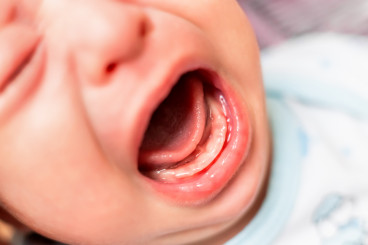Periodontitis
Periodontitis is a severe gum infection that damages the soft tissue and, without treatment, can destroy the bone that supports teeth. It is a common but preventable condition that often results from poor oral hygiene, leading to the formation of plaque—a sticky film of bacteria that forms on teeth. If plaque is not removed through regular brushing and flossing, it can harden into tartar, which can only be removed by a dental professional.
Causes
The primary cause of periodontitis is plaque accumulation. However, several factors can increase the risk of developing this condition, including:
- Genetic Predisposition: Some individuals may have a genetic susceptibility to gum diseases.
- Smoking: Tobacco use significantly impairs gum health and reduces blood flow to the gums, hindering healing.
- Hormonal Changes: Hormonal shifts, such as those occurring during puberty, menstruation, pregnancy, and menopause, can make gums more sensitive and prone to inflammation.
- Chronic Diseases: Conditions such as diabetes or HIV/AIDS can affect the body's ability to fight infections, including gum diseases.
- Poor Nutrition: A diet lacking in essential nutrients can compromise immune function and overall oral health.
Certain Medications: Some medications can affect oral health by reducing saliva flow, which is crucial for maintaining a healthy mouth.
Symptoms
Periodontitis can manifest in various ways, and symptoms may include:
Swollen or Tender Gums: Gums may appear red and inflamed, often with a tendency to bleed during brushing or flossing.
Persistent Bad Breath: Halitosis, or chronic bad breath, can result from the bacteria that thrive in infected gum tissue.
Receding Gums: The gum line may recede, making teeth appear longer and exposing tooth roots.
Loose Teeth: As the supporting bone deteriorates, teeth may become loose or shift in position.
Pus Between Teeth and Gums: The presence of pus can indicate an active infection.
Diagnosis and Treatment
Diagnosis of periodontitis typically involves a thorough dental examination, which may include:
Clinical Evaluation: A dentist or periodontist will assess gum health by measuring the depth of the pockets between the gums and teeth.
X-rays: Dental X-rays can help evaluate the extent of bone loss around the teeth, which is crucial for determining the severity of the condition.
Medical History Review: Understanding a patient's medical history can provide insight into risk factors and potential underlying conditions contributing to gum disease.
Treatment for periodontitis aims to reduce inflammation, control infection, and prevent further damage to gums and bone. Common treatment modalities include:
Scaling and Root Planing: This deep-cleaning procedure involves the removal of plaque and tartar from above and below the gum line. The roots of the teeth are also smoothed to help gums reattach.
Antibiotic Therapy: Antibiotics may be prescribed to help control bacterial infection, either topically (directly applied to the gums) or systemically (oral medication).
Surgical Treatments: In advanced cases, surgical options such as flap surgery (to reduce pocket depth) or bone and tissue grafts may be necessary to restore lost tissue and bone.
Maintenance: Regular dental visits for cleanings and check-ups are essential for monitoring gum health and preventing recurrence.
Prevention
Preventing periodontitis involves maintaining good oral hygiene habits, which include:
Regular Brushing and Flossing: Brushing at least twice a day and flossing daily to remove plaque is crucial.
Routine Dental Visits: Regular check-ups and cleanings, usually every six months, can help catch early signs of gum disease.
Healthy Lifestyle Choices: Avoiding tobacco, eating a balanced diet, and managing chronic conditions contribute to better oral health.
Conclusion
Periodontitis is a serious condition that can lead to tooth loss and other health problems if not addressed. Understanding its causes, symptoms, and treatment options is vital for maintaining oral health. Preventive measures, coupled with professional dental care, play a crucial role in managing this condition effectively.
Explore Dr. BestPrice for affordable dental treatment options today



